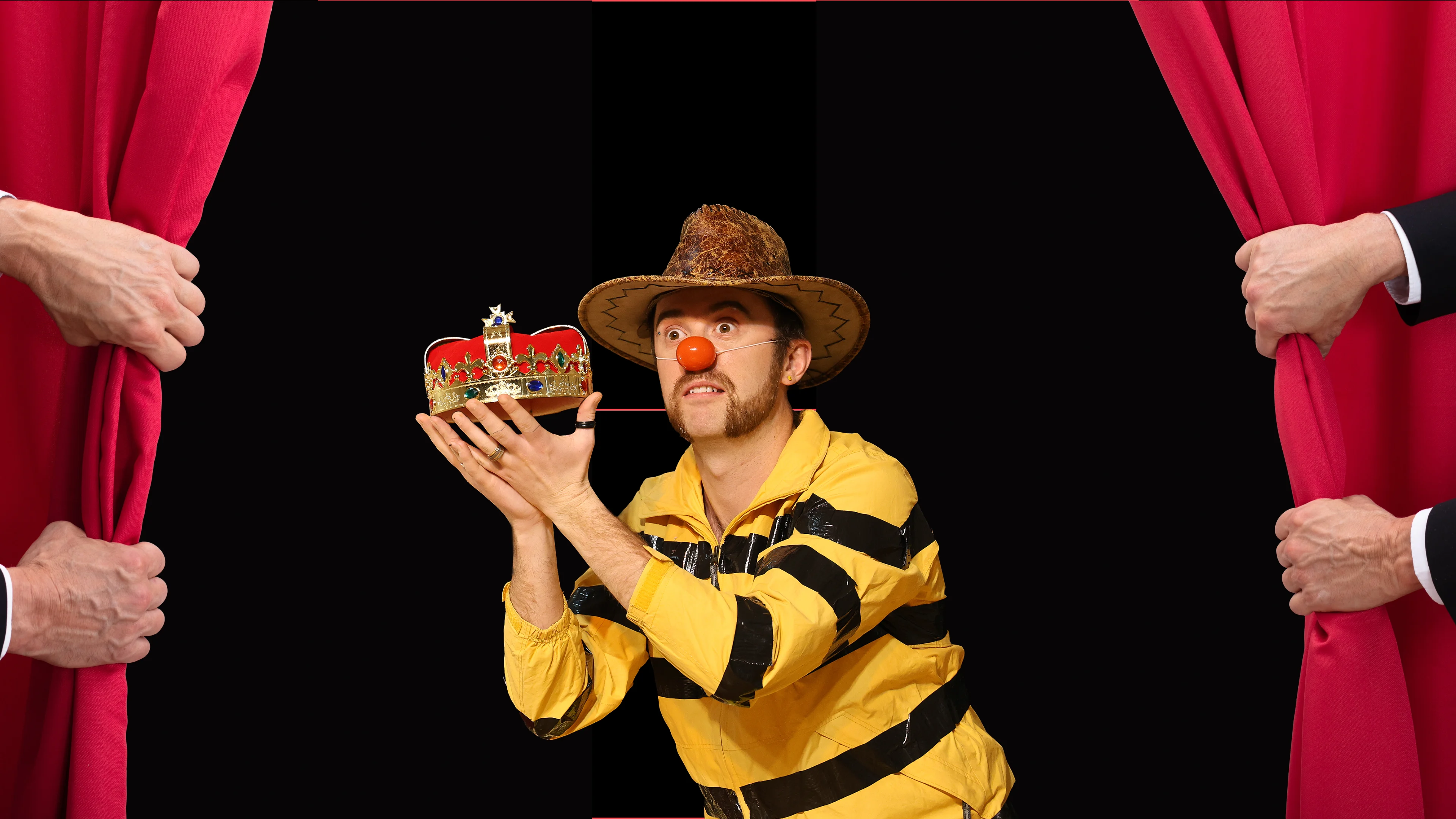
Taster Class In Clown Comedy
Theatre Deli, London
Learn More

Vulnerability is one of the most powerful tools in comedy. It’s the crack in the armour, the wobble in the voice, the moment where the mask slips and we see the soft, squishy human underneath. And audiences love it. Not out of cruelty, but out of connection.
When a performer shows vulnerability - whether emotional, physical, or social - it invites us to care. It says, “Hey, I’m a bit of a mess too. Want to come play?” And most people do.
Connection: Vulnerability builds an invisible thread between the performer and the audience. When we see someone struggling, failing, risking something real - we feel with them. We root for them.
Relatability: Perfect people aren’t funny. But someone who’s trying their best and still getting it wrong? That’s gold. We laugh because we recognise ourselves in them.
Raising the stakes: The more we care, the more the stakes rise. And high emotional stakes make comedy pop. A tiny mishap can become a huge moment if it matters deeply to the character.
Contrast: Vulnerability adds contrast to comedy. The more tender or exposed a moment feels, the funnier it is when something ridiculous happens right after - or during.
Tension and release: Vulnerability often creates a kind of emotional tension in the room. That tension, when broken by a laugh, can feel even bigger and more satisfying.
Clown thrives on vulnerability. A clown is never cooler than the audience. They don’t hide their fear, or embarrassment, or their longing to be loved. They show it. And that showing - the brave willingness to be seen - is what makes clowning so affecting and so funny.
Vulnerability in clown is not the same as being sad, though sadness can be part of it. It’s about openness. About letting the audience in. A clown says, “This is me. Messy. Flawed. Hungry for your love. And I will keep trying.”
A quick note: vulnerability in comedy isn’t about trauma dumping. It’s not therapy on stage (unless that’s the joke). It’s about emotional availability. The performer is present, reactive, and open to being affected. That’s what pulls us in.
In fact, it takes real strength. It’s much easier to hide behind a slick script, a well-rehearsed bit, or a layer of irony. But when a comic or clown steps forward and risks being seen - really seen - we feel it. And that’s unforgettable.
